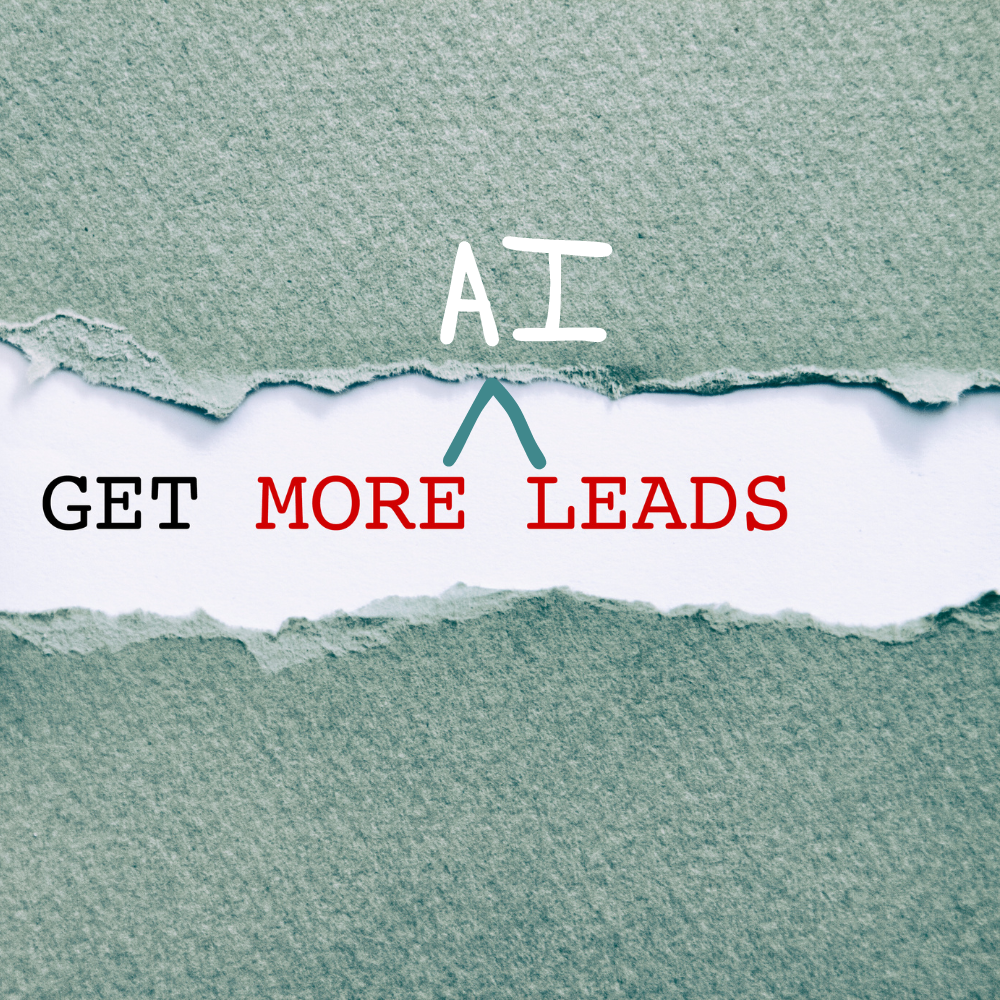Are you looking to maximize your lead conversion rates through a targeted AI Engagement Strategy by Demographics? By leveraging the power of artificial intelligence to analyze demographic data, you can create personalized engagement methods that resonate with your target audience, ultimately boosting your lead conversion rates.
An AI Engagement Strategy by Demographics involves using AI to collect and analyze demographic data, such as age, gender, location, and interests, to create targeted engagement methods, including personalized content, communication channels, and offers, which are then delivered to the right leads at the right time, resulting in higher conversion rates and more effective lead nurturing.
Key Takeaways
- An AI Engagement Strategy by Demographics uses AI to collect and analyze demographic data, creating targeted engagement methods that resonate with your ideal customers.
- Demographic data helps you create personalized content and communication strategies that address your leads’ needs and preferences.
- Implementing an AI Engagement Strategy by Demographics involves setting up an AI-powered data collection system, creating buyer personas, and tailoring your content and communication channels.
- Regularly tracking KPIs and making data-driven improvements are essential for optimizing your lead engagement and conversion rates.
- Incorporating an AI Engagement Strategy by Demographics into your marketing efforts can maximize your lead conversion rates and build stronger relationships with your target audience.
In this article, we’ll explore how an AI Engagement Strategy by Demographics works and provide actionable tips on implementing this approach in your marketing efforts to achieve optimal results.
Understanding the Power of Demographic Data
Demographic data plays a crucial role in creating effective marketing strategies. By understanding key factors such as age, gender, location, and interests, you can develop targeted campaigns that resonate with your ideal customers. AI-powered tools excel at collecting and analyzing vast amounts of demographic data from various sources, providing valuable insights into your target audience’s preferences and behavior.
When implementing an AI Engagement Strategy by Demographics, the first step is identifying the most relevant demographic factors influencing your leads’ decision-making process. Understanding the lead problem awareness process your clients use to identify services that solve their problems is essential. For example, age can be a significant determinant of purchasing behavior, as younger generations may have different priorities and preferences compared to older generations. Similarly, gender can impact the types of products or services that individuals are interested in and the messaging and communication styles that resonate with them.
Location is another critical demographic factor, affecting everything from purchasing power to cultural preferences. Understanding where your leads are located allows you to tailor your marketing efforts to address region-specific challenges and opportunities. For instance, if you’re targeting leads in a particular city or state, you can create content highlighting local events, trends, or regulations that may impact their business decisions.
Interests and behavioral data are also valuable components of an AI Engagement Strategy by Demographics. You can gain deeper insights into their needs, preferences, and pain points by analyzing your leads’ online behavior, such as the websites they visit, the content they engage with, and the search terms they use. This information can help you create more relevant and personalized marketing messages that address their specific challenges and goals.
AI-powered tools are particularly well-suited for collecting and analyzing vast amounts of demographic data from various sources, such as social media profiles, website interactions, customer surveys, etc. These tools can quickly process large datasets and identify patterns and trends that may not be immediately apparent to human analysts. By leveraging AI-powered insights, you can create more accurate buyer personas, segment your audience more effectively, and develop targeted engagement strategies that drive higher conversion rates.
The Benefits of Leveraging Demographic Data
Leveraging demographic data in your marketing efforts can provide numerous benefits, including:
- Increased relevance: By tailoring your content and messaging to specific demographic segments, you can create more relevant and engaging marketing materials that resonate with your target audience.
- Higher engagement rates: When your marketing efforts are more relevant and personalized, your leads are more likely to engage with your content, whether through clicks, shares, or conversions.
- Improved conversion rates: By delivering the right message to the right audience at the right time, you can increase the likelihood of converting leads into customers, ultimately driving revenue growth for your business. Companies that leverage demographic data for personalization see an average increase in sales of 19%.
- Better resource allocation: By understanding which demographic segments are most likely to convert, you can allocate your marketing resources more effectively, focusing on the channels and tactics that deliver the highest ROI. Brands using advanced data segmentation see a 24.3% lower customer acquisition cost.
- Enhanced customer relationships: By demonstrating a deep understanding of your leads’ needs and preferences, you can build stronger, more meaningful relationships with your customers, fostering loyalty and advocacy over time.
Implementing an AI Engagement Strategy by Demographics
To successfully implement an AI Engagement Strategy by Demographics, you’ll need to follow a series of steps that involve setting up an AI-powered data collection system, creating buyer personas based on demographic insights, and developing personalized engagement methods for each persona.
Steps to Set Up an AI-Powered Demographic Data Collection System
- Identify relevant data sources: Determine which data sources, such as social media profiles, website interactions, or customer surveys, will provide the most valuable demographic insights for your business.
- Choose an AI-powered tool: Select an AI-powered marketing tool that can effectively collect, analyze, and segment demographic data from your identified sources.
- Integrate the AI tool with your existing systems: Ensure that your chosen AI tool can seamlessly integrate with your existing marketing platforms, such as your CRM, AI email marketing software, or social media management tools.
- Set up data collection and analysis processes: Configure your AI tool to collect and analyze demographic data based on your specific needs and goals, setting up automated processes where possible to streamline your efforts.
Creating Buyer Personas Based on Demographic Insights
Once your AI-powered demographic data collection system is in place, you can use the insights gathered to create detailed buyer personas representing your ideal customers.
- Analyze demographic data: Use your AI tool to analyze the collected data, identifying patterns, trends, and segments that emerge from the information.
- Identify key persona characteristics: Based on the analyzed data, identify the key characteristics that define each buyer persona, such as age, gender, location, income level, education, interests, and pain points.
- Develop persona profiles: Create detailed profiles for each buyer persona, including a name, photo, and narrative description that captures their key characteristics, goals, challenges, and preferences.
- Validate and refine personas: Validate your buyer personas with internal stakeholders and customer feedback, refining them to ensure they accurately represent your target audience segments.
Developing Personalized Engagement Methods for Each Persona
Once you have created your buyer personas, you can develop personalized engagement methods that resonate with each persona’s unique needs, preferences, and behaviors.
- Tailor content and messaging: Create content and messaging that addresses each persona’s specific pain points, goals, and interests, using language and tone that resonates with their demographic characteristics. 72% of consumers say they only engage with personalized messaging.
- Optimize communication channels: Identify the channels that each persona prefers, such as email, social media, or mobile apps, and optimize your engagement efforts for those channels.
- Personalize offers and incentives: Develop personalized offers and incentives that align with each persona’s purchasing power, interests, and motivations, increasing the likelihood of conversion.
- Continuously test and refine: Regularly test and refine your engagement methods based on performance data and customer feedback, using AI-powered tools to analyze and optimize your efforts over time.
Tailoring Content and Communication for Maximum Impact
One of the most significant advantages of an AI Engagement Strategy by Demographics is the ability to create highly targeted content and communication that resonates with your leads personally. By crafting demographic-specific content and delivering it through the right channels at the optimal times, you can maximize the impact of your marketing efforts and drive better results for your business.
Crafting Demographic-Specific Content That Resonates with Leads
Understanding your leads’ unique needs, preferences, and challenges is essential for creating content that truly resonates with them. By leveraging the demographic insights gathered through your AI-powered data collection system, you can develop content that speaks directly to each persona’s specific situation.
For example, suppose you’re targeting young professionals in the tech industry. In that case, your content should address topics that are relevant to their career goals, such as skill development, industry trends, or work-life balance. By providing valuable insights and practical advice that aligns with their interests and aspirations, you can establish your brand as a trusted resource and thought leader in their eyes.
Similarly, you’re targeting senior executives in the healthcare sector. In that case, your content should focus on the strategic challenges and opportunities they face, such as regulatory compliance, patient outcomes, or digital transformation. By demonstrating a deep understanding of their industry and offering innovative solutions to their most pressing problems, you can position your brand as a valuable partner in their success.
Choosing the Right Communication Channels for Each Demographic
In addition to tailoring your content, delivering your message through the channels that each demographic prefers is crucial. With the wealth of communication channels available today, from email and social media to mobile apps and video platforms, it’s essential to understand where your leads are most likely to engage with your brand.
For instance, if your AI Engagement Strategy by Demographics reveals that a particular persona prefers to consume content on mobile devices, you should optimize your website and marketing materials for mobile viewing and interaction. By delivering your content through the channels that your leads prefer, you can increase the likelihood of engagement and conversion.
Moreover, by analyzing demographic data on channel preferences, you can allocate your marketing resources more effectively, focusing on the channels that deliver the highest ROI for each persona. This targeted approach can help you maximize the impact of your marketing budget and drive better results for your business.
Optimizing Content Delivery Timing Based on Demographic Preferences
Another critical aspect of tailoring your communication for maximum impact is optimizing your content delivery timing based on demographic preferences. By analyzing data on when each persona is most likely to engage with your content, you can schedule your marketing efforts for maximum effect.
For example, suppose your AI Engagement Strategy by Demographics indicates that a particular persona is most active on social media during evening hours. In that case, you can schedule your posts and ads to appear during those times, increasing the likelihood of engagement and conversion. Similarly, if another person tends to open emails during their morning commute, you can optimize your email campaigns to deliver during those peak hours.
By leveraging AI-powered tools to analyze demographic data on content delivery preferences, you can automate your scheduling and optimization efforts, ensuring that your marketing messages reach the right people at the right times, every time.
Measuring the Success of Your AI Engagement Strategy by Demographics
Implementing an AI Engagement Strategy by Demographics is a significant step towards creating more personalized and effective marketing campaigns. However, to truly maximize the impact of this approach, it’s essential to measure the success of your efforts and make data-driven improvements over time.
Key Performance Indicators (KPIs) to Track
To gauge the effectiveness of your AI Engagement Strategy by Demographics, you’ll need to track several key performance indicators (KPIs) that reflect the goals and objectives of your marketing efforts. Some important KPIs to consider include:
- Engagement rates: Measure how often your leads interact with your content, such as clicks, shares, or comments, to assess the relevance and appeal of your messaging.
- Conversion rates: Track the percentage of leads that take a desired action, such as making a purchase or filling out a form, to evaluate the effectiveness of your engagement strategy in driving business results.
- Return on investment (ROI): Calculate the financial return on your marketing investments, comparing the revenue generated to the costs incurred, to ensure that your AI Engagement Strategy by Demographics delivers a positive ROI. Ensure you look at your marketing investment as a whole and not by tactic. Tracking of individual tactics can make it seem like a tactic isn’t working when specific data capture is impossible
By regularly monitoring these KPIs and comparing them to your baseline metrics, you can gain valuable insights into your engagement strategy’s performance and identify improvement areas.
Analyzing Results and Making Data-Driven Improvements
Once you’ve established a system for tracking your KPIs, the next step is to analyze the results of your AI Engagement Strategy by Demographics and make data-driven improvements to optimize your efforts.
For example, if you notice that a particular demographic segment has a significantly higher engagement rate than others, you may want to allocate more resources to targeting that segment and refining your messaging to resonate even more strongly with their needs and preferences.
Similarly, specific communication channels drive higher conversion rates than others. In that case, you should focus on those channels and experiment with new tactics to improve your results.
You can stay ahead of the curve and adapt to changing customer needs and preferences by continuously analyzing your performance data and making iterative improvements to your engagement strategy.
Case Study: B2B Software Company Boosts Lead Generation and Closes More Deals
To illustrate the potential impact of an AI Engagement Strategy by Demographics, let’s take a closer look at a case study of a B2B software company that successfully implemented this approach.
The company, which provides enterprise-level software solutions, was struggling to generate high-quality leads and close deals with their target audience of C-level executives in large corporations. To address this challenge, they decided to leverage AI-powered tools to analyze demographic data on their target audience and create personalized engagement campaigns for each segment.
By collecting and analyzing data on factors such as job title, industry, company size, and location, the company created detailed buyer personas that reflected each segment’s unique needs, preferences, and challenges. They then used these insights to develop tailored content, such as whitepapers, case studies, and webinars, that spoke directly to each persona’s pain points and goals.
In addition to creating targeted content, the company also used AI to optimize their communication channels and delivery timing based on demographic preferences. For example, they found that their target audience was most likely to engage with email content during weekday mornings, so they scheduled their email campaigns accordingly.
As a result of their AI Engagement Strategy by Demographics, the B2B software company saw a significant improvement in their lead generation and sales performance. They were able to generate 50% more qualified leads than the previous year, as their targeted content and messaging resonated strongly with their ideal customer profiles. Moreover, by delivering the right content through the right channels at the optimal times, they were able to nurture these leads more effectively and close 20% more deals than before.
This case study demonstrates the power of leveraging AI and demographic data to create highly personalized and effective engagement campaigns. By understanding the unique needs and preferences of their target audience and tailoring their marketing efforts accordingly, the B2B software company was able to drive significant improvements in their lead generation and sales performance, ultimately achieving a substantial return on their investment in AI-powered marketing technology.
Unleashing the Power of AI for Personalized Engagement
Creating personalized and effective engagement campaigns is more important than ever in today’s fast-paced, highly competitive business landscape. By leveraging the power of AI and demographic data, businesses can gain a deep understanding of their target audience and create tailored content and communication strategies that resonate on a personal level.
An AI Engagement Strategy by Demographics offers a powerful way to maximize the impact of your marketing efforts, drive better business results, and stay ahead of the curve in an increasingly data-driven world. By measuring your success, making data-driven improvements, and learning from other businesses’ experiences, you can create a powerful engagement strategy that sets your brand apart and drives lasting success.
At Inkyma, we specialize in helping businesses like yours unlock the full potential of AI-powered marketing. Our team of experts can guide you through implementing an AI Engagement Strategy by Demographics, from setting up your data collection system to creating targeted content and optimizing your communication channels. To learn more about how Inkyma can help you harness the power of AI for personalized engagement, schedule a strategy session with our team today.
FAQ: How can businesses ensure the ethical use of demographic data in their AI engagement strategies?
When implementing an AI Engagement Strategy by Demographics, businesses must prioritize the ethical use of demographic data to maintain customer trust and comply with privacy regulations. Some key steps to ensure ethical data usage include:
- Transparency: Communicate to customers how their demographic data will be collected, used, and stored, and provide them with the option to opt out if desired.
- Data security: Implement robust data security measures, such as encryption and access controls, to protect customer data from unauthorized access or breaches.
- Compliance: Ensure that your data collection and usage practices comply with relevant privacy regulations, such as GDPR or CCPA, and keep up-to-date with any changes in legislation.
- Bias mitigation: Regularly assess your AI algorithms for potential biases based on demographic factors and take steps to mitigate any identified biases to ensure fair and equitable treatment of all customers.
- Ethical AI framework: Develop an ethical AI framework that outlines your company’s principles and guidelines for the responsible use of AI and demographic data, and ensure that all employees are trained on these principles.
By prioritizing the ethical use of demographic data, businesses can build trust with their customers, comply with legal requirements, and ensure that their AI engagement strategies are fair, transparent, and responsible.



























